Research Area F - Publications 2013
02-Dec-2013
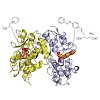
Incorporation of the azobenzene derivative gluazo, a synthetic photochromic ligand, into a kainate receptor allows for the optical control of neuronal activity. The crystal structure of gluazo bound to a dimeric GluK2 ligand-binding domain reveals one monomer in a closed conformation, occupied by gluazo, and the other in an open conformation, with a bound buffer ...
11-Nov-2013
Circulation, online article
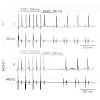
Sinus node dysfunction (SND) is a major clinically relevant disease which is associated with sudden cardiac death and requires surgical implantation of electrical pacemaker devices. Frequently, SND occurs in heart failure and hypertension, conditions that lead to electrical instability of the heart. While the pathologies of acquired SND have been extensively ...
31-Oct-2013
PLOS Genetics. online article
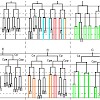
The coordination of cell proliferation and cell fate determination is critical during development but the mechanisms through which this is accomplished are unclear. We present evidence that the Snail-related transcription factor CES-1 of Caenorhabditis elegans coordinates these processes in a specific cell lineage. CES-1 can cause loss of cell polarity in the NSM ...
26-Oct-2013
Hum. Mol. Genet., online article

Mutations in CACNA1F encoding the α1-subunit of the retinal Cav1.4 L-type calcium channel have been linked to Cav1.4 channelopathies including incomplete congenital stationary night blindness type 2A (CSNB2), Åland Island eye disease (AIED) and cone-rod dystrophy type 3 (CORDX3). Since CACNA1F is located on the X chromosome, Cav1.4 channelopathies are typically ...
11-Oct-2013
ChemBioChem, online article

The backbone dynamics of the amyloid precursor protein (APP) transmembrane helix was compared to those of other transmembrane domains. In contrast to expectation, no above-average backbone dynamics was found for the APP transmembrane helix; the dynamics thus appears not to be optimized for cleavage.
11-Sep-2013
The Journal of Neuroscience, online article
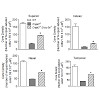
Photoreceptor cyclic nucleotide-gated (CNG) channels regulate Ca2+ influx in rod and cone photoreceptors. cGMP, the native ligand of the photoreceptor CNG channels, has been associated with cytotoxicity when its levels rise above normal due to defects in photoreceptor phosphodiesterase (PDE6) or regulation of retinal guanylyl cyclase (retGC). We found a massive ...
05-Sep-2013
Developmental Cell, online article
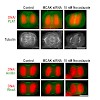
During animal cell cytokinesis, the spindle directs contractile ring assembly by activating RhoA in a narrow equatorial zone. Rapid GTPase activating protein (GAP)-mediated inactivation (RhoA flux) is proposed to limit RhoA zone dimensions. Testing the significance of RhoA flux has been hampered by the fact that the GAP targeting RhoA is not known. Here, we ...
05-Sep-2013
PLOS ONE, online article

In previous work, we found that gain-of-function mutations that hyperactivate GEM-1 (an SLC16A transporter protein) can bypass the requirement for GON-2 (a TRPM channel protein) during the initiation of gonadogenesis in C. elegans. Consequently, we proposed that GEM-1 might function as part of a Mg2+ uptake pathway that functions in parallel to GON-2. In this ...
13-Aug-2013
PNAS, online article
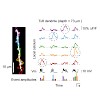
Layer 5 pyramidal neurons process information from multiple cortical layers to provide a major output of cortex. Because of technical limitations it has remained unclear how these cells integrate widespread synaptic inputs located in distantly separated basal and tuft dendrites. Here, we obtained in vivo two-photon calcium imaging recordings from the entire ...
01-Aug-2013
Development, online article

The engulfment and subsequent degradation of apoptotic cells by phagocytes is an evolutionarily conserved process that efficiently removes dying cells from animal bodies during development. Here, we report that clathrin heavy chain (CHC-1), a membrane coat protein well known for its role in receptor-mediated endocytosis, and its adaptor epsin (EPN-1) play crucial ...
22-Jul-2013
PNAS, online article

Mitochondrial morphology changes in response to various stimuli but the significance of this is unclear. In a screen for mutants with abnormal mitochondrial morphology, we identified MMA-1, the Caenorhabditis elegans homolog of the French Canadian Leigh Syndrome protein LRPPRC (leucine-rich pentatricopeptide repeat containing). We demonstrate that reducing mma-1 ...
17-Jul-2013
Molecular Genetics and Genomics, online article
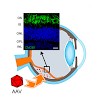
Visual phototransduction relies on the function of cyclic nucleotide-gated channels in the rod and cone photoreceptor outer segment plasma membranes. The role of these ion channels is to translate light-triggered changes in the second messenger cyclic guanosine 3′–5′-monophosphate levels into an electrical signal that is further processed within the retinal ...
27-Jun-2013
Cell Reports, online article
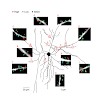
In the mammalian brain, calcium signals in dendritic spines are involved in many neuronal functions, particularly in the induction of synaptic plasticity. Recent studies have identified sensory stimulation-evoked spine calcium signals in cortical neurons in vivo. However, spine signaling during ongoing cortical activity in the absence of sensory input, which is ...
01-May-2013
Bioinformatics, online article

Most integral membrane proteins form dimeric or oligomeric complexes. Oligomerization is frequently supported by the non-covalent interaction of transmembrane helices. It is currently not clear how many high-affinity transmembrane domains (TMD) exist in a proteome and how specific their interactions are with respect to preferred contacting faces and their ...
02-Apr-2013
Org. Letters, online article

Pericyclic reaction cascades are unparalleled in their ability to quickly generate complex structures with excellent stereocontrol. Herein, the use of a biomimetic Stille/8π electrocyclization/Diels–Alder cascade to successfully assemble the core structure of (−)-PF-1018 is reported.
21-Mar-2013
Front. Mol. Neuroscience, online article
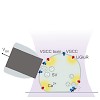
A wide range of light-activated molecules (photoswitches and phototriggers) have been used to the study of computational properties of an isolated neuron by acting pre and postsynaptically. However, new tools are being pursued to elicit a presynaptic calcium influx that triggers the release of neurotransmitters, most of them based in calcium-permeable ...
20-Mar-2013
Neuron, online article
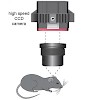
Corticothalamic slow oscillations of neuronal activity determine internal brain states. At least in the cortex, the electrical activity is associated with large neuronal Ca2+ transients. Here we implemented an optogenetic approach to explore causal features of the generation of slow oscillation-associated Ca2+ waves in the in vivo mouse brain. We demonstrate that ...
03-Mar-2013
Nature Neuroscience, online article

G protein–coupled receptors (GPCRs), the largest family of membrane signaling proteins, respond to neurotransmitters, hormones and small environmental molecules. The neuronal function of many GPCRs has been difficult to resolve because of an inability to gate them with subtype specificity, spatial precision, speed and reversibility. To address this, we developed ...
28-Feb-2013
Neuroscience Letters, online article
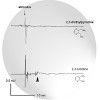
The Grueneberg ganglion (GG) in the anterior nasal region of mice is considered as an olfactory compartment since its neurons were recently observed to be activated by chemical stimuli, in particular by the odorant 2,3-dimethylpyrazine (2,3-DMP). However, it is unclear whether the GG indeed serves an olfactory function since these findings are solely based on the ...
07-Feb-2013
Nature Protocols, online article
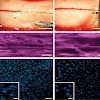
Here we provide a protocol for rapidly labeling different cell types, distinct subcellular compartments and key injury mediators in the spinal cord of living mice. This method is based on the application of synthetic vital dyes to the surgically exposed spinal cord. Suitable vital dyes applied in appropriate concentrations lead to reliable in vivo labeling, which ...
04-Feb-2013
Journal of Biological Chemistry, 2013, doi: 10.1074/jbc.M112.434803, 288, 7580-7589 published on 04.02.2013
Journal of Biological Chemistry, online article

Most ion channels consist of the principal ion-permeating core subunit(s) and accessory proteins that are assembled with the channel core. The biological functions of the latter proteins are diverse and include the regulation of the biophysical properties of the ion channel, its connection to signaling pathways and the control of its cell surface expression. ...
24-Jan-2013
Chemistry & Biology, online article
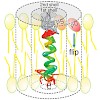
Lipid translocation from one lipid bilayer leaflet to the other, termed flip-flop, is required for the distribution of newly synthesized phospholipids during membrane biogenesis. However, a dedicated biogenic lipid flippase has not yet been identified. Here, we show that the efficiency by which model transmembrane peptides facilitate flip of reporter lipids with ...
15-Jan-2013
Journal of Visualized Experiments, online article
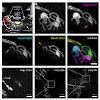
Sequential photo-bleaching provides a non-invasive way to label individual SCs at the NMJ. The NMJ is the largest synapse of the mammalian nervous system and has served as guiding model to study synaptic structure and function. In mouse NMJs motor axon terminals form pretzel-like contact sites with muscle fibers. The motor axon and its terminal are sheathed by ...
02-Jan-2013
Biochemestry, online article
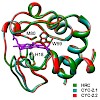
Cytochrome c (cyt c) is one of the most widely studied biomolecules, but not much is known about this protein from nematodes. Recombinant expression of Caenorhabditis elegans CYC-2.1 and CYC-2.2 allowed for detailed characterization of their structural features, redox properties, stabilities, and interactions with cardiolipin (CL)-containing liposomes. Using a ...










